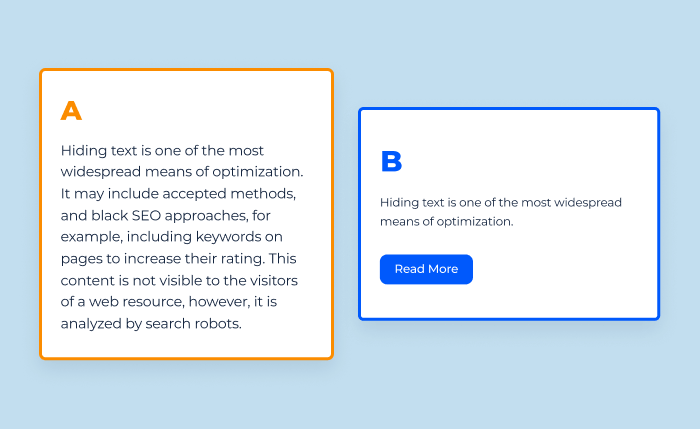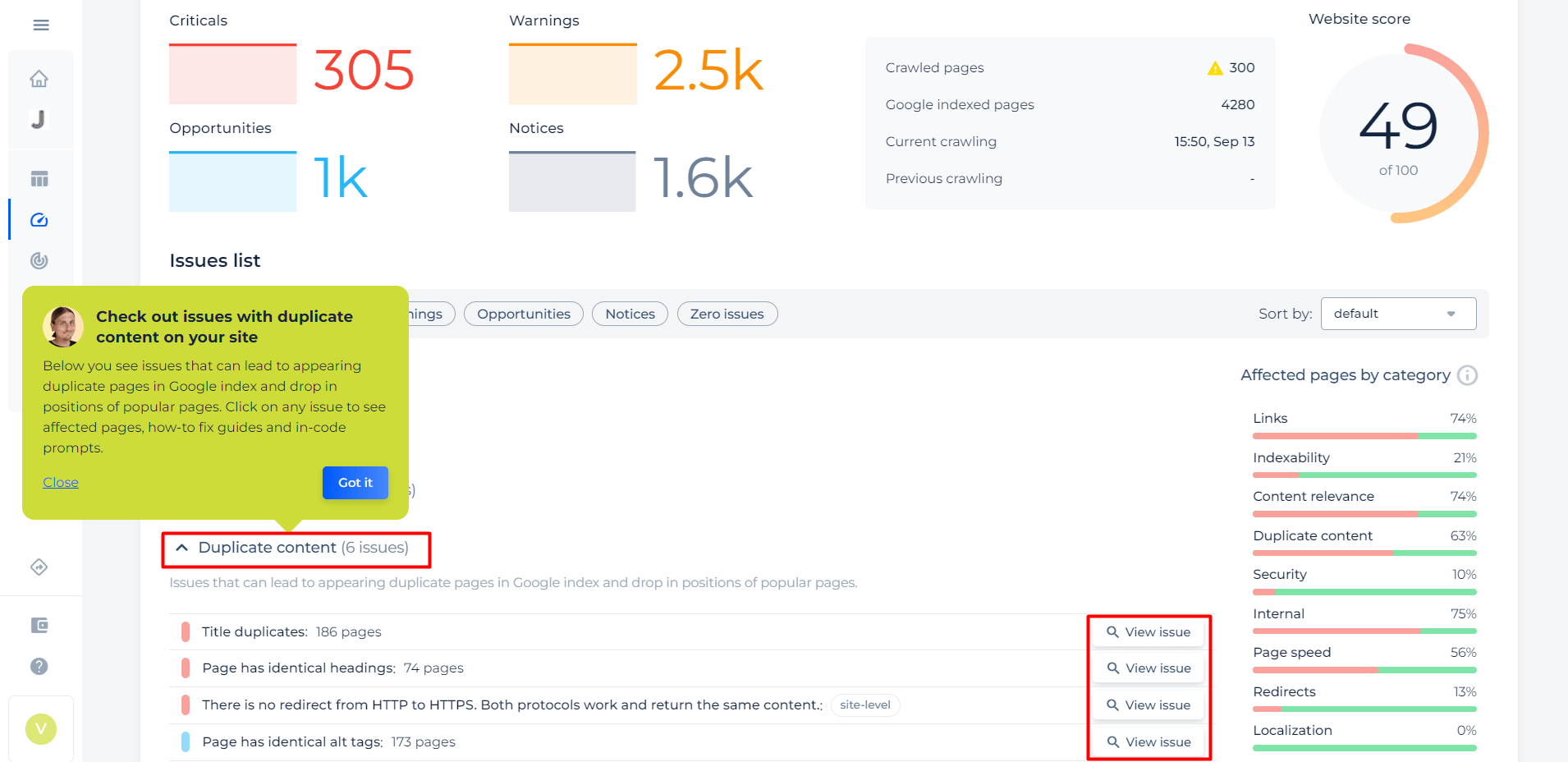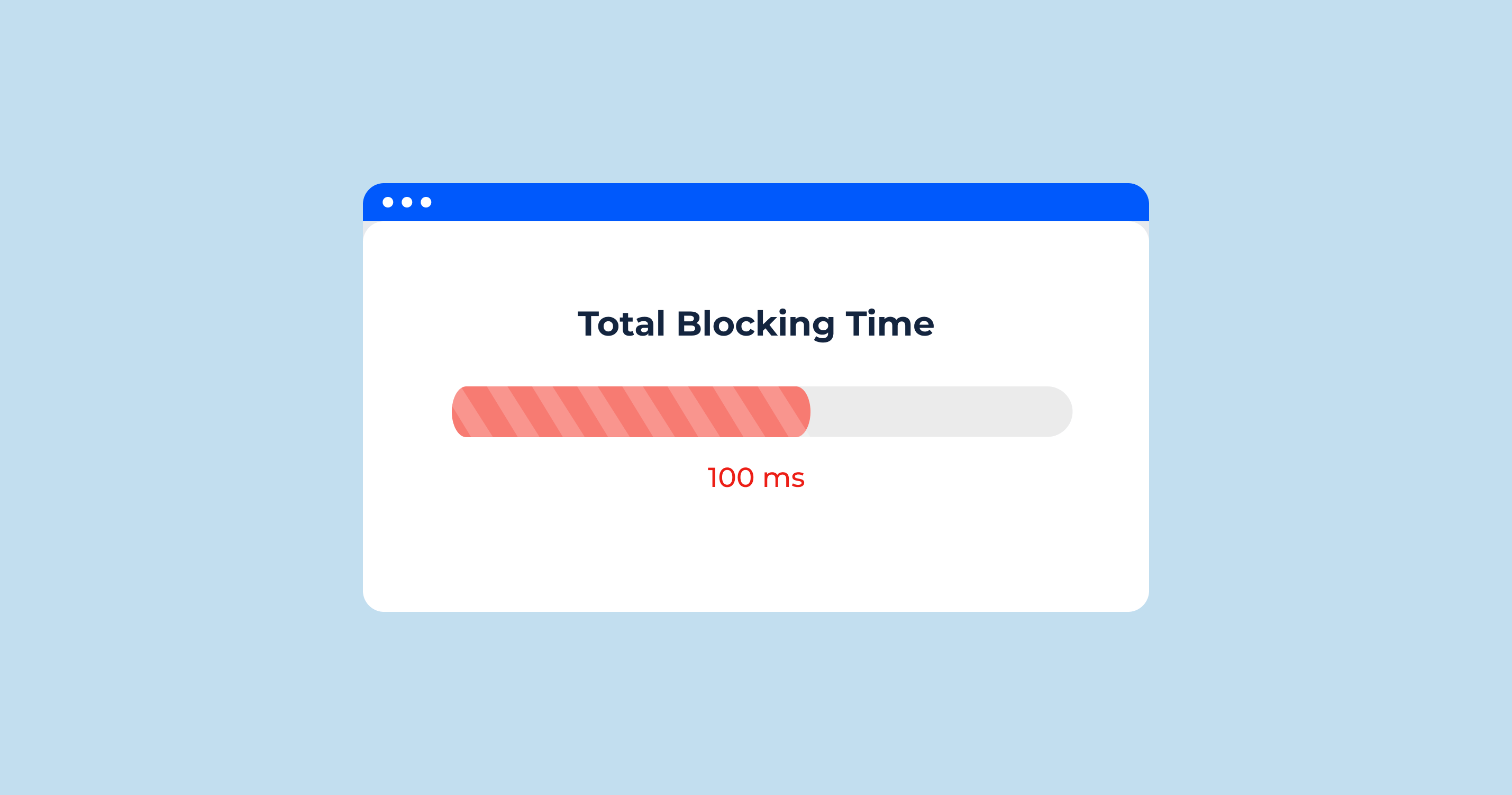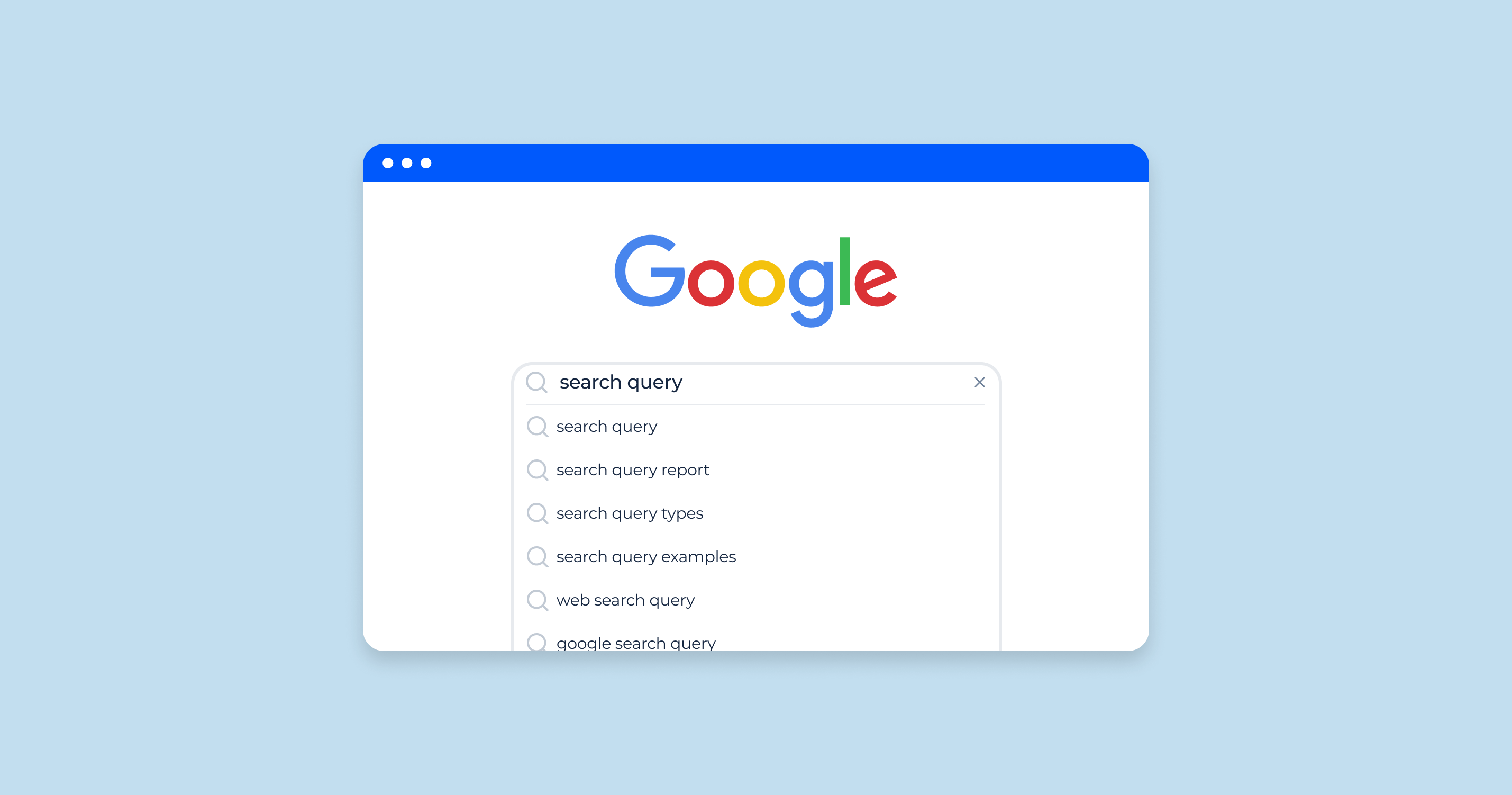What Is Hidden Text?
Hidden text refers to words or phrases on a web page that are not visible to users but can be seen by search engines. This practice was historically used by some webmasters to stuff keywords into a website without disrupting the user experience, aiming to rank higher on search engines. However, this method of ‘hiding’ a word or text is now widely discouraged as it can be seen as deceptive and may result in penalties by search engines like Google.
There are various ways in which text can be hidden on a web page. This includes using white text on a white background, using CSS to hide text or push the text off the visible page, setting the font size to zero, or using HTML tags to hide text or make the text invisible. While these practices can be easily implemented, they violate search engine guidelines and can harm the integrity and ranking of a website.
What is invisible text in SEO?
Invisible text, specifically within the context of SEO, refers to text elements on a webpage that are purposely hidden from website visitors but are readable by search engines. The idea behind using invisible text was to increase keyword density on a page without affecting its visual aesthetics. Webmasters would often overload this invisible text with keywords they wanted web pages to rank for.

However, modern search engines have evolved, and their algorithms can now detect such tactics. Instead of helping with rankings, using invisible text can now harm a website’s SEO efforts. Search engines view such practices as an attempt to manipulate rankings and can penalize sites for it.
In conclusion, while hidden or invisible text was once a widely-used tactic, it is now considered black-hat SEO. Websites that prioritize genuine content and user experience are the ones that tend to rank higher and perform better in the long run.
Outdated & Spammy Ways Text Was Hidden
In the early days of the internet, search engine algorithms were not as sophisticated as they are today. This made them susceptible to manipulation by crafty webmasters seeking to gain an unfair advantage in search rankings. One such method that became rampant was the use of hidden text. These outdated and spammy techniques were used to artificially boost keyword density and deceive search engines into thinking a page was more relevant to a query than it actually was.
Here are some of the most commonly used methods:
| Text Matching the Background Color | One of the simplest and most widely used techniques involved setting the text color to match the background color of the web page. For instance, using white text on a white background. To human eyes, the text would be invisible, but search engines would still index it. |
| Zero Font Size | Webmasters would set the font size of certain texts to ‘0’, making it invisible to visitors but still readable by search engine crawlers. |
| CSS Tricks | Cascading Style Sheets (CSS) was misused to position text off the visible screen or hide it behind images. Techniques like “text-indent” and absolute positioning were used to push text out of the viewable area. |
| HTML Comments | Some believed that placing keywords inside HTML comments would be indexed by search engines without displaying to users. However, search engines quickly adapted and started ignoring content within comment tags. |
| Using ‘NoScript’ Tags | Content placed within ‘NoScript’ tags was meant for users who had JavaScript disabled. Some webmasters abused this by stuffing keywords within these tags, hoping search engines would consider them. |
| Hidden Div Layers | Using the ‘div’ HTML tag with styles set to ‘display:none’ or ‘visibility:hidden’ was another technique. This would make the content within the div invisible to users but crawlable by search engines. |
As search engine algorithms evolved, these tactics became less effective and more risky. Search engines, recognizing the deceptive nature of these techniques, began penalizing websites that employed them. These penalties could range from ranking drops to complete de-indexing of the site.
Modern SEO emphasizes transparency, user experience, and genuine content. Attempting to game the system with outdated tricks like hidden text not only provides no value to users but can also severely harm a site’s reputation and ranking in search results.
Hidden Text Penalties
Hidden text, as a deceptive tactic, has been on search engines’ radar for a long time. As algorithms advanced, they’ve become better at detecting such practices and assigning penalties to websites that employ them. Websites caught using hidden text can suffer significant setbacks, including lowered rankings or even removal from the search index entirely.
Does Google see hidden text?
Yes, Google can detect hidden text. With its advanced crawling and indexing capabilities, Googlebot can read the CSS styles and scripts on a website to understand how content is presented to users. If Google detects that text is intentionally hidden from users but is visible to search engines, it considers this a violation of its Webmaster Guidelines.
It’s worth noting that not all hidden content is penalized. For instance, responsive designs might hide certain elements on mobile views, or tabbed content might only display certain text when a tab is clicked. Google understands these user experience considerations and typically does not penalize for them, as long as the intention isn’t to deceive.
John Mueller has said on Twitter that Google discounts hidden text for ranking. He has also said that Google’s systems are pretty good at recognizing hidden text, ignoring it, and focusing on what’s otherwise on the site.
This means that if you are using hidden text on your website, it is unlikely to help you rank better in Google search results. In fact, it could actually hurt your ranking.
There are a few reasons why Google discounts hidden text. First, it is often used for black hat SEO practices, such as keyword stuffing. Second, hidden text can make your website less accessible to users with disabilities. Third, hidden text can simply be annoying to users.
If you are using hidden text on your website, I recommend that you remove it. It is not worth the risk of hiding text hurting your ranking or annoying your users.
Here are some examples of hidden text:
- Text that is the same color as the background of the page
- Text that is hidden behind an image or other element
- Text that is very small or difficult to read
- Text that is only visible when the user hovers over an element
- Text that is hidden in a comment or script tag
If you are unsure whether or not a piece of text is hidden, you can use a tool like the Chrome Developer Tools to inspect the document or page source.
Here is a video where Matt Cutts and Nelson discuss manual actions for “Hidden text/keyword stuffing” and its fixes.
iframe width=”560″ height=”315″ src=”https://www.youtube.com/embed/7y-m_jiayLQ?si=7pe9v3VEJDGRuYEB” title=”YouTube video player” frameborder=”0″ allow=”accelerometer; autoplay; clipboard-write; encrypted-media; gyroscope; picture-in-picture; web-share” allowfullscreen/iframe
Is hiding text bad for SEO?
Absolutely. Hiding text is considered a black-hat SEO tactic, and using it can lead to severe repercussions for a website’s search engine rankings. Here’s why:
- Violation of Webmaster Guidelines: Both Google and Bing explicitly mention in their guidelines that hiding text or links in content can negatively impact a website’s ranking.
- Loss of Trust: Once penalized, it’s challenging to regain trust from search engines. Even after rectifying the issues, recovery can take a long time, and there’s no guarantee of regaining the lost rankings.
- Poor User Experience: SEO isn’t just about search engines; it’s about users. Even if hidden text were not penalized by search engines, it still offers no value to users. Effective SEO practices should enhance user experience, not detract from it.
- Potential for De-indexing: In extreme cases, particularly for repeat offenders, search engines might remove a website from their index entirely. This means the website will not appear in search results at all.
In the ever-evolving world of SEO, it’s crucial to prioritize ethical, white-hat strategies. Not only do these strategies align with search engine guidelines, but they also provide genuine value to users, ensuring long-term growth and success.
Difference Between Hidden Text & Hidden Tabbed Content
At a glance, hidden text and hidden tabbed content might seem similar because, in both cases, certain content isn’t immediately visible to users. However, they serve different purposes and are treated differently by search engines. Understanding these differences is essential to ensure a website provides a good user experience while adhering to search engine guidelines.
- Intent
- Hidden Text: The primary intention behind hidden text, especially in the context of black-hat SEO practices, is to deceive search engines. Webmasters would “hide” excessive keywords or irrelevant content to manipulate search rankings without these words being visible to site visitors.
- Hidden Tabbed Content: This refers to content that is hidden for design and user experience purposes but can be viewed by users when they take a specific action, like clicking on a tab. The intent here is to organize information in a way that is user-friendly, especially on pages with substantial content.
- User Accessibility
- Hidden Text: Users cannot see or access hidden text without altering the page’s code or styles. It remains invisible regardless of any action taken by the user.
- Hidden Tabbed Content: While initially hidden, this content becomes accessible and visible to users upon interaction. For example, a user can click on different tabs to view corresponding content without leaving the page.
- Search Engine Treatment
- Hidden Text: Modern search engines are adept at detecting intentionally hidden text meant for manipulation. If caught, websites can face penalties, including lowered rankings.
- Hidden Tabbed Content: Recognizing the importance of user experience, search engines like Google have stated that they index and consider content in tabs or accordions. The primary concern is the relevance and value of the content, not necessarily its immediate visibility.
- Use Cases
- Hidden Text: There’s hardly a valid use case for hidden text in modern web design and SEO. It’s an outdated tactic that’s more likely to harm than help.
- Hidden Tabbed Content: Common on FAQ pages, product pages, or any webpage with a lot of categorized information. It helps streamline and organize content, making it digestible for users.
While hidden text is a frowned-upon tactic aimed at deceiving search engines, hidden tabbed content is a design and UX strategy that makes web navigation smoother for users. It’s crucial for webmasters and SEO professionals to understand this distinction and ensure that any hidden elements on a site are implemented with user experience in mind, not manipulation.
How to Hide Content & Not Violate Google’s Guidelines
There are legitimate reasons to hide content on a website, often related to design, user experience, or mobile responsiveness. However, it’s crucial to ensure that these practices are in line with Google’s guidelines to avoid potential penalties. Here’s how you can hide content without risking SEO repercussions:
- Prioritize User Experience: The primary consideration should always be the user. If content is hidden for the sake of improving the user’s experience, such as through responsive designs or interactive elements, it’s usually acceptable.
- Avoid Keyword Stuffing: Never hide content that’s stuffed with keywords for the sake of manipulating rankings. This is one of the most surefire ways to attract penalties.
- Use Schema Markup: For certain types of hidden content, for example, like FAQs that use a toggle to show/hide answers, consider using schema markup. This helps search engines understand the structure of your content.
- Mobile Responsiveness: With the rise of mobile-first indexing, it’s understood that some content visible on desktop might be hidden on a mobile device for design reasons. As long as the content isn’t essential for understanding the page’s main topic, this is usually acceptable.
- Transparent Practices: Always be clear about why certain content is hidden. If questioned or audited, you should be able to justify the hiding based on user experience or another legitimate reason.
How do I hide text on a website?
If you have a genuine reason to hide text on your website for user experience purposes, here’s how you can do it without resorting to deceptive techniques:
- CSS Visibility: Using CSS properties like visibility: hidden; or display: none; can hide elements. This is acceptable for temporary hiding, especially in interactive designs, but be cautious not to abuse these properties for SEO manipulation.
- HTML5 and <details> & <summary> Tags: These tags allow you to create content that can be toggled to show or hide. It’s a semantically correct way to hide content and is supported by most modern browsers.
- Responsive Designs: Utilize media queries in CSS to hide or display content based on device size. For instance, a sidebar might be hidden on mobile views to prioritize main content.
- Tabbed Content or Accordions: Using JavaScript or simple CSS, you can create tabbed interfaces or accordions that hide content until a user interacts with a specific tab or button.
- Modal Windows or Pop-ups: These are overlays that can contain additional information, ensuring the main content remains uncluttered.
When implementing any of these methods, always prioritize transparency and user experience. If hiding content adds value to the user and isn’t done to deceive search engines, it aligns with best practices and won’t violate Google’s guidelines.
Why It’s Important to Use Hidden Content for SEO
Are Hidden Texts Important?
The topic of hidden texts in the realm of SEO and web design is layered, and its importance can be evaluated from various perspectives:
| Historical Significance in SEO | In the early days of search engine optimization, hidden texts were used as a technique to increase keyword density on web pages without disrupting user experience. Websites would hide keywords, hoping search engines would rank them higher for those terms. From a historical standpoint, hidden texts played a role in shaping the evolution of SEO techniques and search engine algorithms. |
| Potential for Misuse | As search engines became more sophisticated, they began recognizing hidden texts as a deceptive tactic. Websites employing this black-hat SEO method started getting penalized. Therefore, from an SEO best practices perspective, hidden texts are significant as a method to avoid. |
| User Experience & Design | In modern web design, content can be hidden for legitimate user experience purposes, such as responsive design, tabbed content, or accordions. This type of “hidden” content is different from deceptive hidden texts. It’s crucial for web designers and developers to differentiate between beneficial content hiding for UX and deceptive practices for SEO manipulation. |
| Technical Considerations | Hidden texts, when used improperly, can slow down a website, especially if there’s a lot of it. Search engines consider site speed as a ranking factor, so webmasters must be aware of any potential slowdowns caused by hidden elements. |
| Accessibility Concerns | Hidden texts can also impact the accessibility of a website. Screen readers used by visually impaired individuals might read out hidden content, confusing the user. Thus, from an accessibility standpoint, understanding how to properly use and manage hidden content is essential. |
Hidden texts are important from both historical and contemporary viewpoints. Their misuse can lead to penalties, but when used appropriately for design and user experience, they can enhance a website’s functionality. It’s imperative for webmasters, designers, and SEO professionals to understand the nuances and implications of use of hidden text content.
Duplicate Content Checker to Find Internal Duplicate Content
In the vast ecosystem of online content, the Duplicate Content Checker by SiteChecker stands out as an invaluable tool. It delves deep into your website, ensuring that your content remains unique and untarnished by accidental replication. By identifying mirrored content, it aids in preserving your site’s SEO integrity, keeping your rankings safe from potential penalties.

Beyond its primary functionality, the tool provides a user-friendly interface that makes scanning an effortless task. An added boon is its side-by-side comparison feature, offering a visual representation of duplicated content against the original. This granularity helps website owners quickly spot and rectify any overlaps, ensuring authentic and original content.
Ensure Your Content's Originality!
Spot potential content duplicates with our tool before search engines do.
Conclusion
Hidden text, once a widely-used tactic in the infancy of SEO, has evolved in its significance and application over the years. Today, search engines prioritize user experience, transparency, and relevance, penalizing tactics that aim to deceive. While there are legitimate reasons to hide content, such as for design or responsive purposes, the intent behind these actions is paramount. It’s essential for webmasters and SEO professionals to strike a balance, ensuring content is both accessible and beneficial to users while adhering to the guidelines set by search engines. In the ever-shifting landscape of digital optimization, understanding the history, implications, and best practices surrounding hidden content remains crucial.




